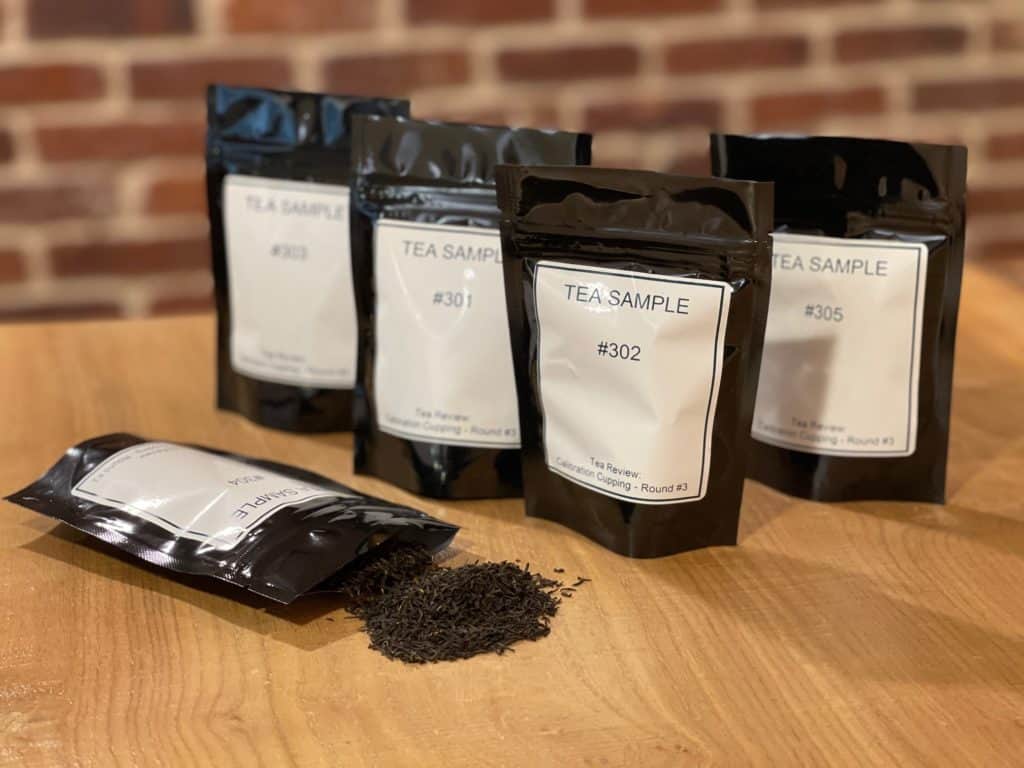
Five Keemun samples in numbered bags as received by Tea Review tasting panel members. Photo courtesy of Ron Walters.
After a year-long hiatus due to COVID, we are excited to announce that we have completed another calibration cupping exercise! This cupping is the third cupping by our expert Tasting Panel, with the goal of bringing us closer to validating and building consensus around our Tasting and Scoring Methodology.
If you’ve been following along, we have had 2 previous cupping events, the first covered 16 teas: 4 white, 4 green, 4 oolong, and 4 black. The lowest scoring spread of the 4 categories was the black tea category, so cupping 2 covered 6 black teas. The aim of the third and most recent cupping exercise was to zoom into the black tea category even further and to focus on a single style, Keemun.
Keemun is a famous Chinese black tea produced in Qimen County in China’s Anhui province. This tea is often seen on a list known as Zhong Guo Shi Da Ming Cha (中国十大名茶), or, “The Ten Famous Teas of China.” In fact, it is the only black tea to appear on the list.
Note that Qimen and Keemun are the same word, Qimen is the correct pinyin for Keemun, but the tea’s name is often spelled Keemun in the west.
One of the first teas labeled as English Breakfast Tea in the 1820s, Keemun is typically produced much like the orthodox teas of India. The leaves are rolled on a rolling table which breaks them down into small pieces which are then screened into uniform grades. There are also full-leaf variants of this tea on the market known as Keemun Mao Feng. A classification system was developed in the 1970s as a communication aid and to ensure consistency of Keemun teas. The system is made up of a series of numerical grades followed by names for the top two grades, Hao Ya B, and Hao Ya A. Classic Keemun teas are woodsy and winey, with notes of dried fruit and hints of rose.
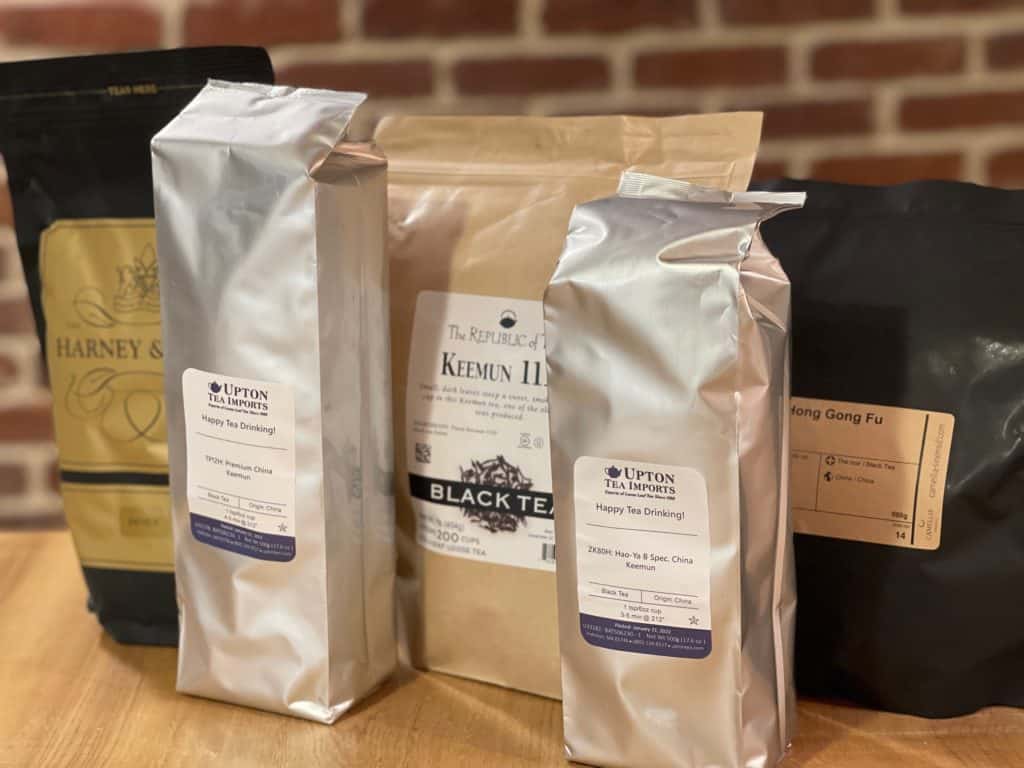
Five Keemun samples sourced from various tea retailers. Photo courtesy of Ron Walters.
For this cupping, 5 Keemun teas were sourced from various US retailers, with prices ranging from $0.05/gram to $0.26/gram. The teas were numbered 301-305 and sent to each person on the tasting panel to be tasted blind. The intention was to source several “fair” to “very good” teas based largely on price and the reputation of the retailer. Now let’s get nerdy:
- The average score for all samples by all cuppers was 83 points.
- The average high score by all cuppers for all tea samples was 91.5 points (i.e. “very good to outstanding,” according to our qualitative interpretations.
- The average low score by all cuppers for all samples was 71.6 points (i.e. “not recommended” according to our qualitative interpretations.
- The average score for the cuppers ranged from a low of 74.8 points (not recommended) to a high of 90.6 points (very good to outstanding).
One of the ways we measure consensus is by looking at spread, which refers to the difference between the highest and lowest scores assigned to a tea sample by our cuppers. The average spread across all 5 teas was 17.5. Spread ranged from a high of 21 (samples 301 and 302) points to a low of 14 (samples 304 and 305).
When looking at the average score for each tea sample, they placed in the following order:
- 301 with an average score of 75.75
- 302 with an average score of 77.25
- 303 with an average score of 83.25
- 305 with an average score of 90.00
- 304 with an average score of 89.50
We can see a clear consensus that 301 and 302 were the bottom two teas, 304 and 305 were the top two teas, and 303 was somewhere in the middle.
This tracks quite nicely with price per gram (seen below), if only price were a reliable indicator of quality.
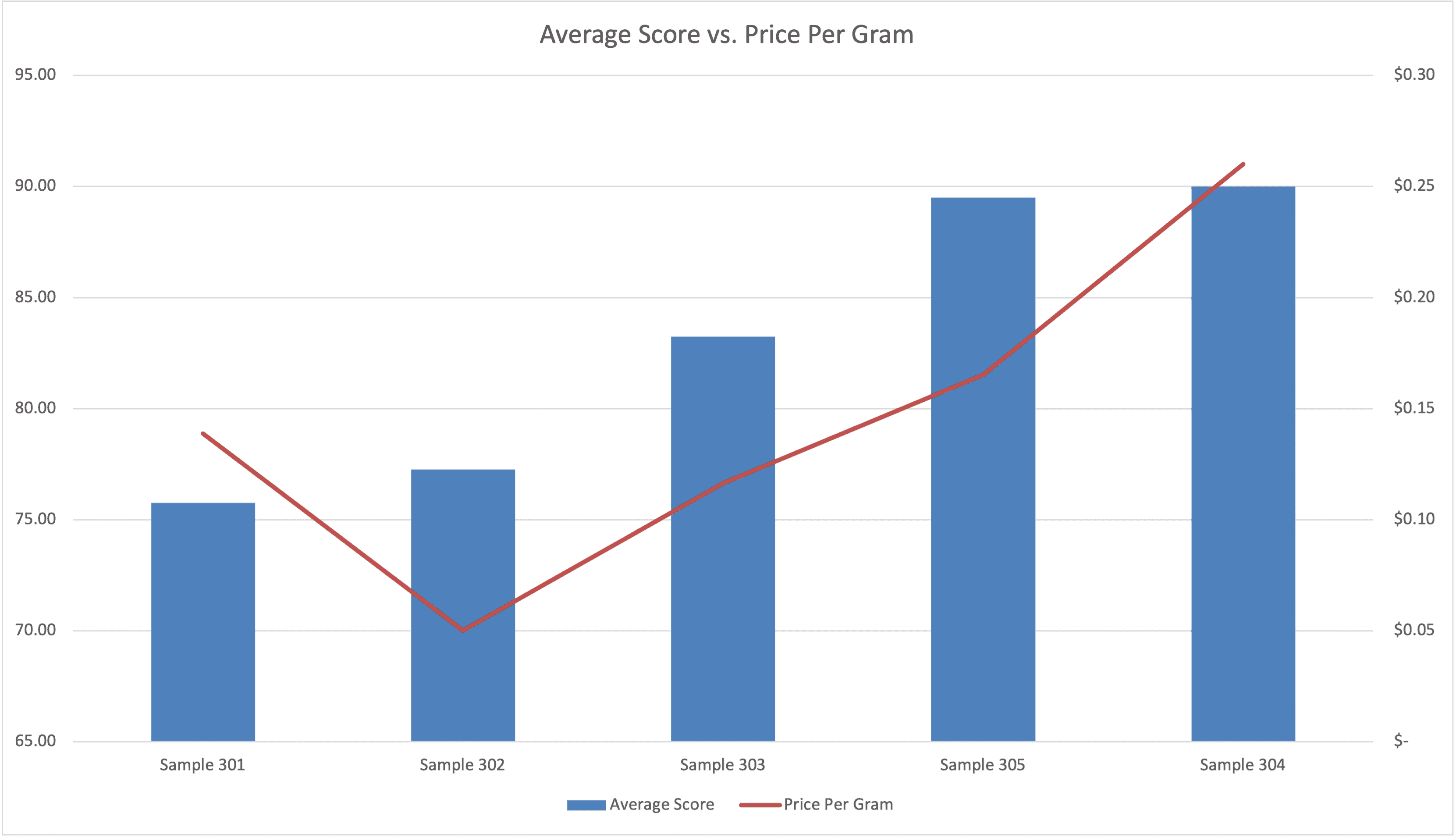
When we dig a bit deeper into the top two teas, 304 and 305, we see that of the 8 cuppers, 5 rated 305 as their top tea, 2 rated 304 as their top tea, and one had them tied. So while 304 topped 305 when we look at the average scores across all cuppers, it’s interesting to see that more cuppers chose 305 as their top tea than 304.
When we look at how each cupper scored each sample (seen below) a two things become clear:
- We are able to see that there is consensus around the ranking of the teas from worst to best
- There is less consensus around the scores assigned to the teas (noted by spread above)
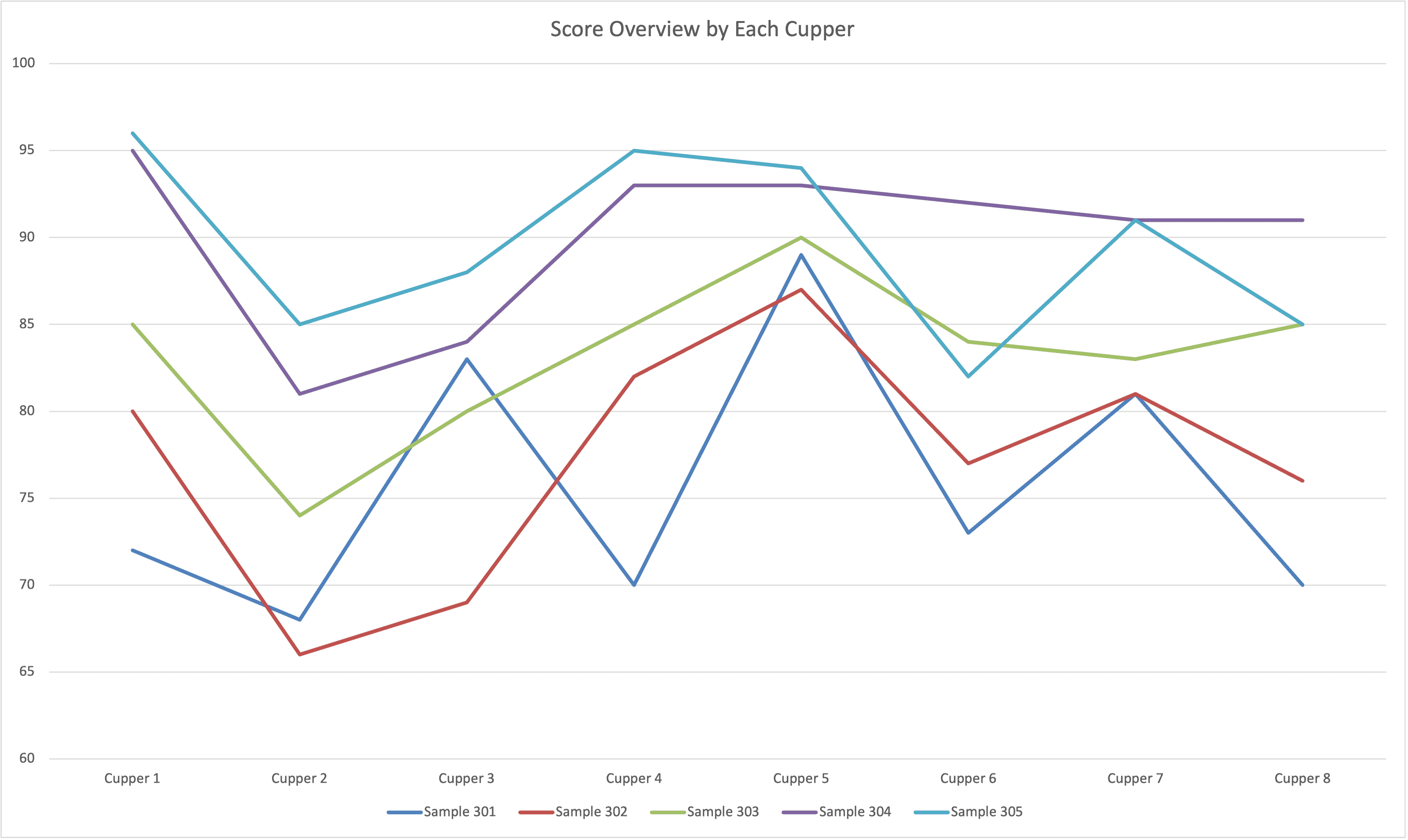
Our next cupping will aim to further reinforce areas where we’re seeing consensus among the tasting panel and will be announced shortly.
Without further delay, we present, the first two tea reviews:
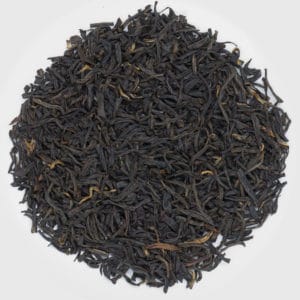
Keemun Sample 304
Overall score: 90
Aroma: 7.8
Flavor: 7.8
Body: 8.4
Astringency/Structure: 7.9
Aftertaste: 7.6
Blind Assessment: Uniform slender leaves with a small percentage of golden tips. A strong aroma of caramel and rose. Velvety, full body with a complex flavor made up of wood, honey, toffee and rose. Floral undertones give way to a lingering resonant fruit, mineral, floral aftertaste.
The Bottom Line: A very good tea exhibiting classic Keemun characteristics, if you are new to Keemuns, start here!
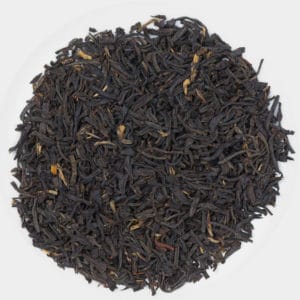
Keemun Sample 305
Overall score: 90
Aroma: 7.4
Flavor: 7.7
Body: 7.8
Astringency/Structure: 7.6
Aftertaste: 7.8
Blind Assessment: A nice showing of hairy golden tips among slender leaf particles of various sizes. Strong aroma of honey and smoke, notes of toffee, brown sugar and various fruit in the cup. Full, smooth, balanced body with a long sweet, floral and woody finish.
The Bottom Line: A very good tea, offering more diversity of flavor and complexity than a typical Keemun.
References:
- Tea in China: The History of China’s National Drink by John C. Evans, p131
